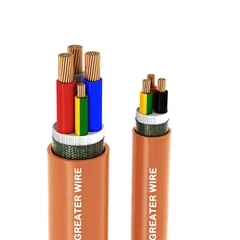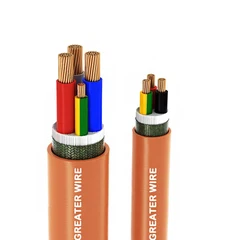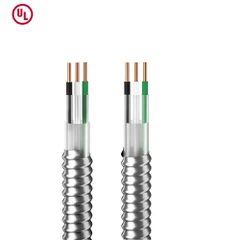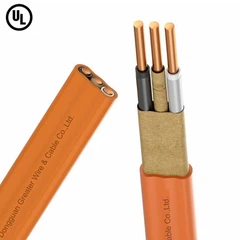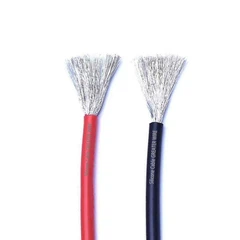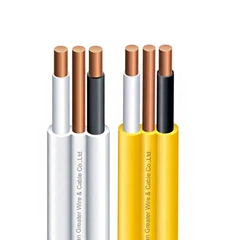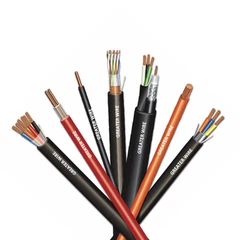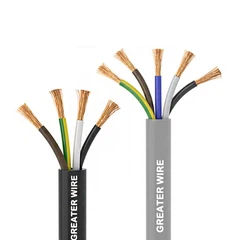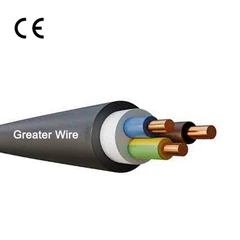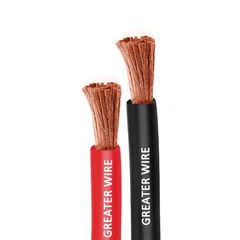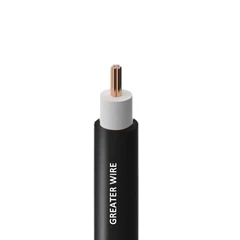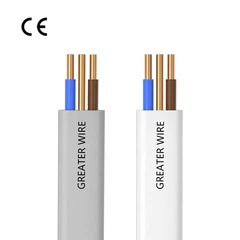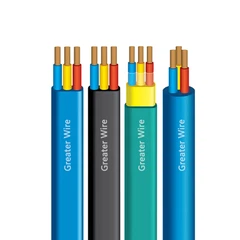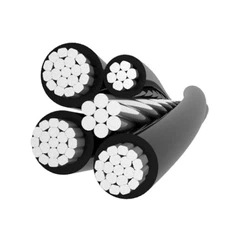Solar cables are an essential component of photovoltaic (PV) systems, responsible for transmitting the electricity generated by solar panels to inverters or other devices. Choosing the correct cable size, such as a 4mm solar cable, ensures optimal performance, efficiency, and safety in your solar installation. This article explores the scenarios where a 4mm solar cable is appropriate, focusing on the technical requirements, advantages, and relevant standards like H1Z2Z2-K and PV1-F.
What Is a 4mm Solar Cable?
A 4mm solar cable refers to a photovoltaic cable with a cross-sectional area of 4mm². It is commonly used in medium-sized PV systems for both residential and commercial applications. This size is versatile and capable of handling the electrical demands of many solar installations.
Features of 4mm Solar Cables:
Standard Compliance: Manufactured according to photovoltaic standards such as EN 50618 (H1Z2Z2-K) and TÜV (PV1-F).
Voltage Rating: Typically supports up to 1.0 kV DC (PV1-F) or 1.5 kV DC (H1Z2Z2-K).
Temperature Resistance: Can withstand extreme weather conditions, with operating ranges from -40°C to +120°C.
UV Resistance: Designed for outdoor use with excellent UV protection.
Durability: Resistant to abrasion, chemicals, and mechanical stress.
Standards for Solar Cables: H1Z2Z2-K and PV1-F
H1Z2Z2-K:
Applications: High-performance systems requiring long lifespans and robust safety measures.
Voltage: Supports up to 1.5 kV DC, making it suitable for larger installations.
Features: Cross-linked polyethylene (XLPE) insulation for superior thermal and mechanical properties.
PV1-F:
Applications: Widely used in small to medium PV systems.
Voltage: Supports up to 1.0 kV DC, adequate for standard residential systems.
Features: Halogen-free, flame-retardant materials ensure safety and environmental compatibility.
When Should You Use a 4mm Solar Cable?
The decision to use a 4mm solar cable depends on several factors, including the power requirements, cable length, system design, and environmental conditions. Below are the scenarios where this cable size is most appropriate:
1. Medium-Sized PV Systems
A 4mm solar cable is ideal for medium-sized residential or commercial solar installations with moderate energy demands. These systems typically operate at a voltage level that aligns with the cable's capacity.
Examples:
A residential rooftop solar system generating 3–10 kW.
A small commercial solar farm powering a single facility.
2. Short to Medium Cable Runs
The cross-sectional area of 4mm² provides sufficient conductivity for short to medium cable runs without significant energy losses.
Voltage Drop Consideration:
To maintain efficiency, the voltage drop across the cable should not exceed 3%. For distances up to 15 meters in a typical 12V system or 30 meters in a 48V system, a 4mm cable is suitable.
3. Connection Between Panels and Inverters
The 4mm solar cable is frequently used to connect solar panels to inverters, especially in string configurations. It ensures reliable transmission of DC electricity under typical operating conditions.
Why Use 4mm?:
Balances cost-effectiveness and performance.
Meets the current-carrying capacity for most string inverters.
4. Standard PV Systems Voltage and Current
Solar cables are chosen based on system voltage and current. For systems where the maximum current is below 25A, a 4mm² cable suffices, given its typical current-carrying capacity under standard conditions.
H1Z2Z2-K and PV1-F Compatibility:
Both standards support the use of 4mm cables in systems with these specifications, ensuring compliance with international safety and performance benchmarks.
5. Outdoor Applications
Solar installations often expose cables to harsh environmental conditions. A 4mm cable designed under H1Z2Z2-K or PV1-F standards offers UV resistance, thermal stability, and mechanical durability, making it suitable for outdoor use.
Specific Use Cases:
Rooftop solar panels exposed to direct sunlight.
Ground-mounted systems in open fields.
6. Cost Optimization for Small Installations
For budget-conscious projects, a 4mm solar cable provides a good balance of performance and cost. It is less expensive than larger cables like 6mm² or 10mm² but still meets the demands of smaller systems.
How to Choose Between H1Z2Z2-K and PV1-F for 4mm Cables
When selecting a 4mm solar cable, consider the following distinctions between H1Z2Z2-K and PV1-F standards:
System Size and Voltage:
Use H1Z2Z2-K for systems requiring up to 1.5 kV DC.
Use PV1-F for systems with a lower voltage requirement (up to 1.0 kV DC).
Durability Needs:
H1Z2Z2-K cables offer superior mechanical and thermal resistance, making them better for high-stress environments.
PV1-F is suitable for less demanding applications.
Compliance Requirements:
Verify local regulations and standards for solar installations to ensure compliance.
Installation Tips for 4mm Solar Cables
Voltage Drop Calculations:
Ensure the cable length and cross-section minimize voltage drop to improve system efficiency.
Proper Insulation:
Always use cables with UV-resistant and weatherproof insulation for outdoor setups.
Secure Connections:
Use appropriate connectors to prevent energy loss or electrical hazards.
Cable Protection:
Consider additional conduit or cable trays in areas prone to physical damage.
Compliance Checks:
Ensure that your cables meet H1Z2Z2-K or PV1-F standards for safety and reliability.

